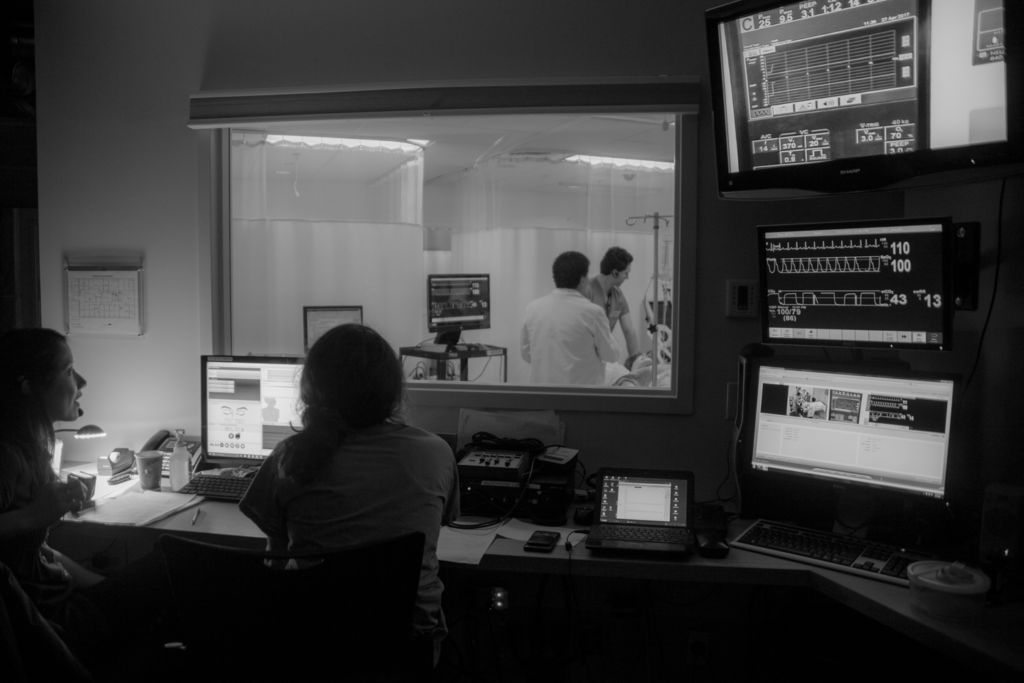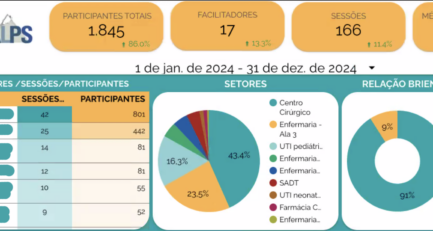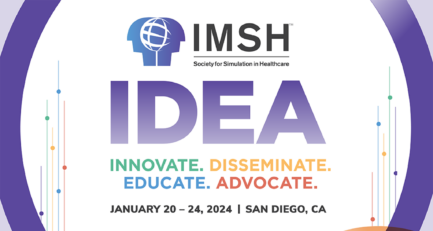
CMS Sim Technician Jenn Konjoian and MGH Resident Phuong Tran run the control room while Harvard Med School faculty Jose Venegas and Paul Dieffenbach act in a simulation.
In April, the Harvard Medical School and MIT School of Engineering joint MD/PhD program returned to the Center for Medical Simulation for the 23rd straight year. The relationship began back at CMS’ original home near the Prudential Center in downtown Boston, and the first year medical and PhD students have been getting a crash course in simulation to help apply their knowledge about ventilation systems ever since.
Stephen Loring, MD, one of the creators of the program, shared some history and thoughts with us on their most recent visit:
“It was at the Prudential Center, about 22 years ago. Jose Venegas was very instrumental in getting all of the simulations set and going. It has been extraordinarily useful for the course ever since.”
“I think it’s two-fold; one is the usual simulator benefits of having the students understand that they need to cooperate and work in teams, but there’s much less emphasis on that in our course. It’s much more getting the simulation to illustrate features that we have been talking about and learning about all through the semester. And as such, it’s wonderful. The number of times people have said, ‘Oh, it really makes all of this stuff that we’re learning worthwhile, and now we see why you have to learn it,’ that’s been very helpful. Just excellent.
“A majority of the people in our class will be getting MDs. Some of them, a lot of them with PhDs also, but some of them are what are called MEMP students, which is medical education medical physics. The MEMP students are just PhDs, they don’t have a background in medicine. Although they’re learning about the science, they’re pretty much devoid of the practice angle of things. Many of those are going to be very engaged in these problems because it’s obvious that this is how you apply what we’ve been teaching.
“The simulator from the very beginning, this simulator has always been one that can produce realistic responses to changes in mechanical ventilation and changes in disease state. We looked into other simulators, at the medical school and elsewhere, and they’re not designed for that, they can’t do that. The combination of the technical expertise here with Jose and the others of us who know a lot about engineering as well as respiration physiology, are able to produce something that’s very realistic and illustrative, I think.”
We asked Dr. Loring about the challenge of overcoming the “performance gap” with his students, the gap between knowing something you’ve been taught and being able to apply it in a live setting. His response:
“Yeah, that’s a big challenge, especially with one of our simulations where they come in and are confronted, pretty much without guidance, with a patient who is slowing down and not breathing, and sort of having to think about all those things they’ve learned about, ‘So what can we do now, since this is a problem?’ And I think that’s very exciting and motivating for a lot of kids. It’s been pretty much uniformly very popular with the students.”

